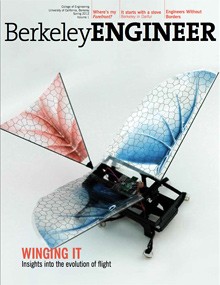Molecular Legos
Collagen makes our teeth hard, our corneas transparent and our ligaments strong. By arranging simple collagen fibers in certain ways, nature creates complex materials whose structural properties serve important biological functions. Call it your basic Lego building block. Yet this animal protein, for all its versatility, is difficult to work with in the lab. Scientists, led by bioengineering associate professor Seung-Wuk Lee, recently cleared this hurdle. First reported in Nature, the researchers developed a technique to produce finely controlled structural arrangements of the benign M13 virus, resulting in useful materials. The simple process, which mimics the functionality of collagen, can be used in biomedical applications and may one day inform the science of tissue regeneration.

